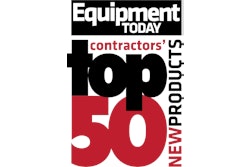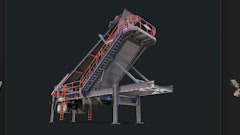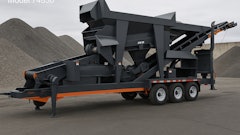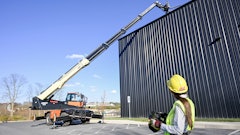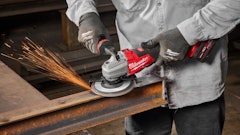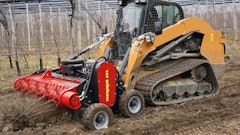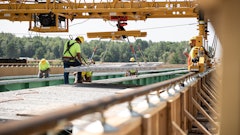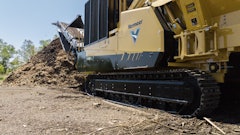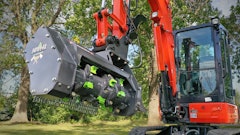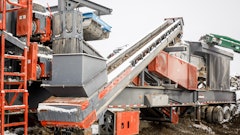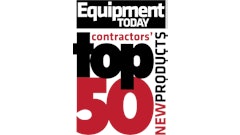
We are in the full swing of fall sports seasons. After a long week on jobsites, we’re sitting on the couch and turning on the TV to watch our favorite team. Much like a football team driving toward the end zone before the clock runs out, a jobsite crew works together to complete specific tasks on time and on budget. In both football and construction, success depends on skilled players and the right equipment.
On a crushing site, the crusher plays the role of the running back — powerful, reliable and essential for driving production forward. But the machine that delivers material to the crusher is where the play begins, much like a quarterback handing off the ball. Choosing the right support machine, whether an excavator or a wheel loader, can affect the accuracy and efficiency of the crusher machine.
 RDO Equipment Co.
RDO Equipment Co.
Crusher Types Defined
Before diving into the excavator versus wheel loader debate, let’s break down the different types of crusher machines. Crushers are developed for different materials and loading capacities. Kleeman crushers, for example, come in three major types.
- Jaw crushers — Designed for primary crushing of hard stone and recycling materials with high throughput and mobility.
- Impact crushers — Ideal for soft to medium-hard stone and recycling, producing high-quality, well-shaped aggregates.
- Cone crushers — Used for secondary and tertiary crushing of hard and abrasive stone with precision and efficiency.
Crusher Comparison Table
Crusher Type | Typical Use | Feed Capacity (U.S. tons per hour) | Drive Type | Key Models |
| MOBICAT Jaw Crusher | Pre-crushing hard stone or recycling | 1323 | Diesel-direct/electric | MC 100i EVO, MC 120i PRO |
| MOBIREX Impact Crusher | Soft to medium stone or recycling | 772 | Diesel-direct/electric | MR 100 NEO, MR 130i EVO2 |
| MOBICONE Cone Crusher | Tertiary hard stone | 717 | Diesel-electric | MCO 90i EVO2, MCO 130 S |
While some contractors like southern-Utah-based TKB Excavation opt to use all three models to produce the materials they need to deliver to their customers, others choose the crusher based on the orders they’re filling. Once the main crusher machine has been selected, the contractor can choose an excavator or wheel loader that will deliver consistent material and keep the crusher producing the desired output(s), whether that’s gravel, sand or specific rock sizes for landscapers. While both excavators and wheel loaders have their place on the jobsite, one clearly earns the MVP title when it comes to optimizing crusher performance.
Excavators: Precise Feeding for Maximum Efficiency
Excavators allow operators to pick out and move uncrushable or oversized material before it hits the crusher rotor. In tight spaces and uneven terrain, an excavator’s reach and maneuverability make it the ideal choice for in-place crushing applications.
Excavators’ ability to maintain a consistent material bed depth and feed rate into the rotor improves throughput and reduces wear on some components to potentially lower material production costs.
Wheel Loaders: Increased Speed for Potential Production Gains
Wheel loaders can handle high-volume and fast-paced operations. In such instances, operators need to pay attention to Kleeman’s Constant Feed System (CFS) so they keep the faster pace and act as finished material movers when the crusher produces the final product.
One thing to note, though, is that on asphalt and concrete rubble applications, wheel loaders can pose a higher risk of bridging, leading to uncrushable material entering the crusher, which can cause increased wear and downtime.
The Bottom Line: Application Drives the Decision
There’s no one-size-fits-all answer. Excavators are the best bet for crews working in tight spaces or needing precision feeding. They’re like the nimble ball carrier, avoiding obstacles and operating efficiently. On the flip side, like a power back whose role is just to hit the line hard time and time again, wheel loaders can come in clutch for bulk material handling, though they may carry some risk.
Still unsure which machine fits your site and material? Talk to the experts at your local dealer. They’ll help you build a winning lineup and keep your cost per ton in check.






